Top Photo: European hornet inspects bark of tree where hive is located.
While you’re walking along the paths of our outdoor loop through the Dinosaur Trail, Explore the Wild and Catch the Wind keep an eye out for large yellow, black and brown wasps, European hornets. The wasps are large and intimidating but are considered non-aggressive. I agree.
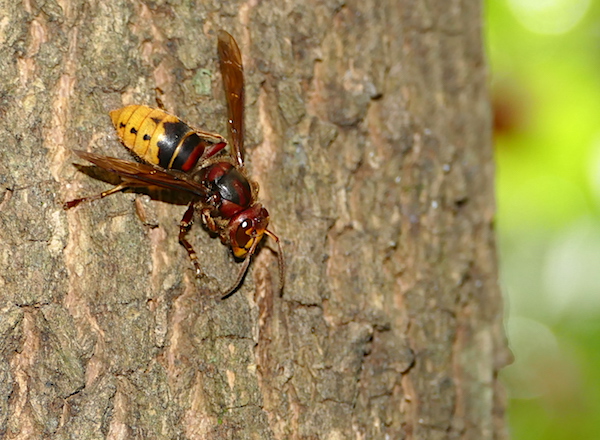
They’re social wasps. Here at the museum, all of the nests, or hives, of these vespids that I’ve seen were in a hollow at the base of a tree. Much larger but more docile than yellowjackets, I’ve yet to be stung or even investigated by a European hornet. So if you happen to see one, or several of them, hovering about at the base of a tree while visiting the museum, simply leave them be. They won’t harm you if you don’t harass them.
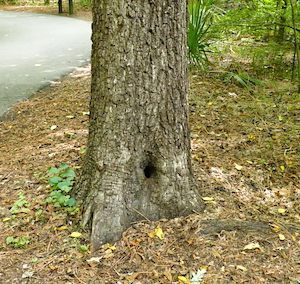
Native to Europe and Asia, European hornets were first detected in North America in the 1840s.
The stink bug pictured here (below) is not what you may think. This insect does not invade your home, is a native and does not eat your hard-grown fruit, vegetable and other cultivated plants in your garden. That insect would most likely be the brown marmorated stink bug, or one of the other plant devouring stink bugs.
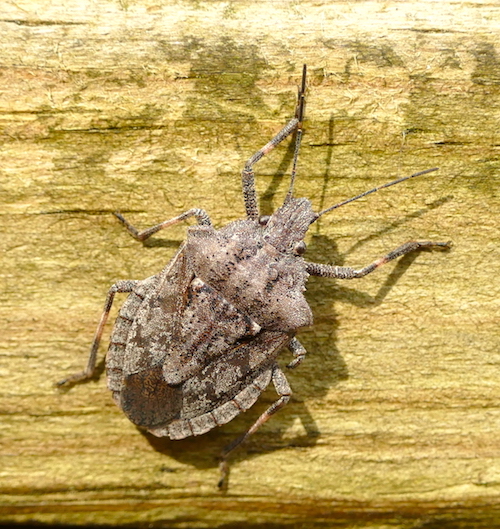
Here, you see one of the Brochymena stink bugs, or rough stink bugs. Rough stink bugs eat caterpillars, leaf beetle and sawfly larvae, and other insects that do eat your favorite plants.
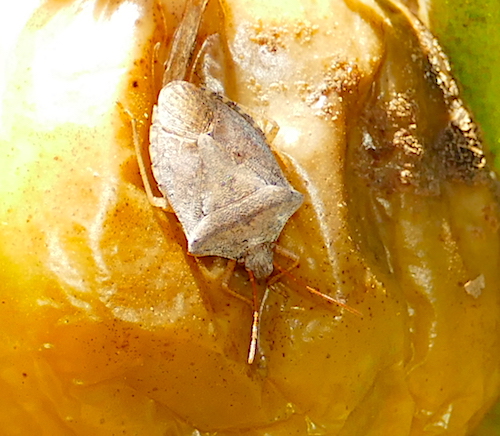
The name “rough” comes from the saw-toothed edge of the insect’s pronotum or “shoulders” (behind the eye).
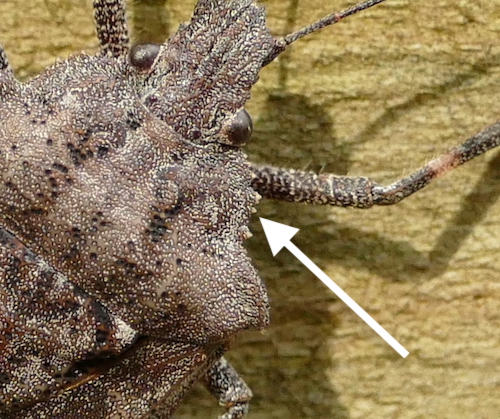
Landscape technician Jenn has a way of finding interesting critters while applying her trade. It’s not unusual for me to get a text during the day with a picture or video attached of some unidentified plant or insect she’s discovered. Last week she stubbled upon a large caterpillar making its way off to find a suitable location to pupate.
The caterpillar was red or pinkish on its upper surface with fine black barring. When Jenn poked at it, it flipped onto its back revealing a series of oblique white lines. It was a hornworm, or sphinx moth caterpillar. It also showed a bright yellow-green ventral area, or underside. It was a banded sphinx moth caterpillar.
Here’s one we saw earlier in the month.
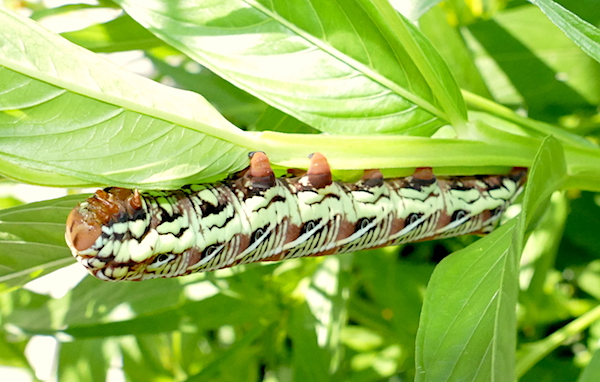
Highly variable in color but with a consistent pattern, it couldn’t be anything else. And, there were many host plants nearby where the caterpillars of this species could feed in relative safety.

By the way, we later discovered about a dozen more banded sphinx moth caterpillars from the deck of the floating walkway. We also found a couple of Virginian tiger moth caterpillars, a few smartweed caterpillars, and a flannel moth caterpillar. But, more on those gems on the next post.
Enjoy!
Great post! I’ve also found European hornets not to be aggressive and will coexist with them if they stay outside.
Jenn sounds like a treasure as a coworker !
Thanks.
And yes, a treasure indeed.